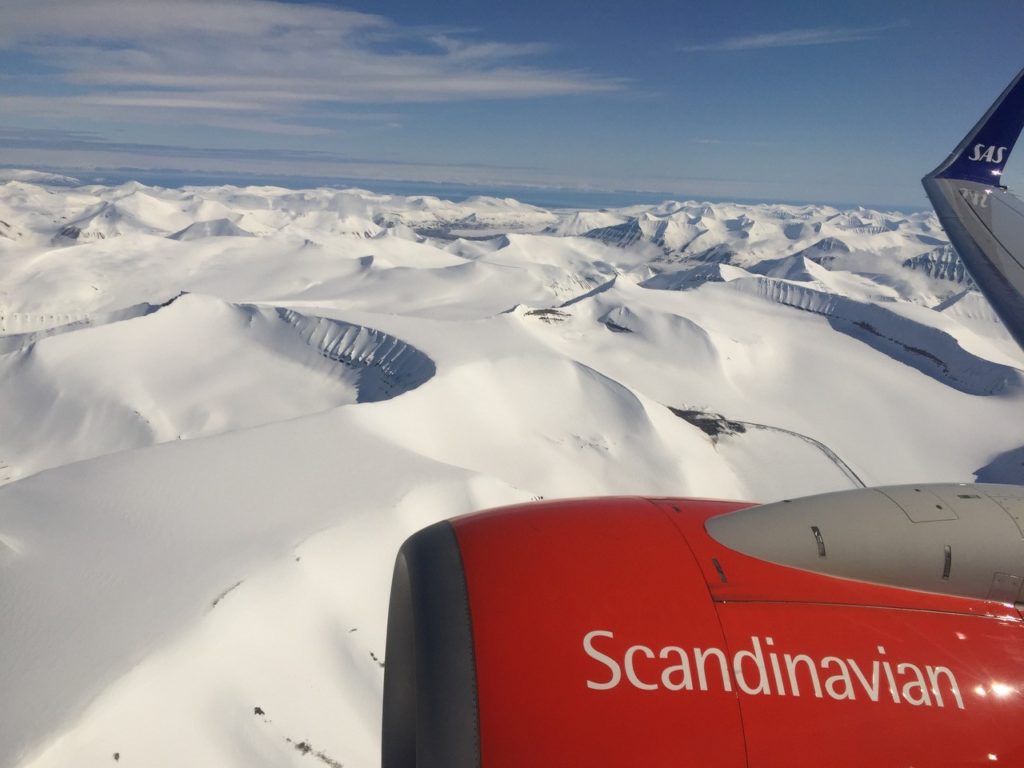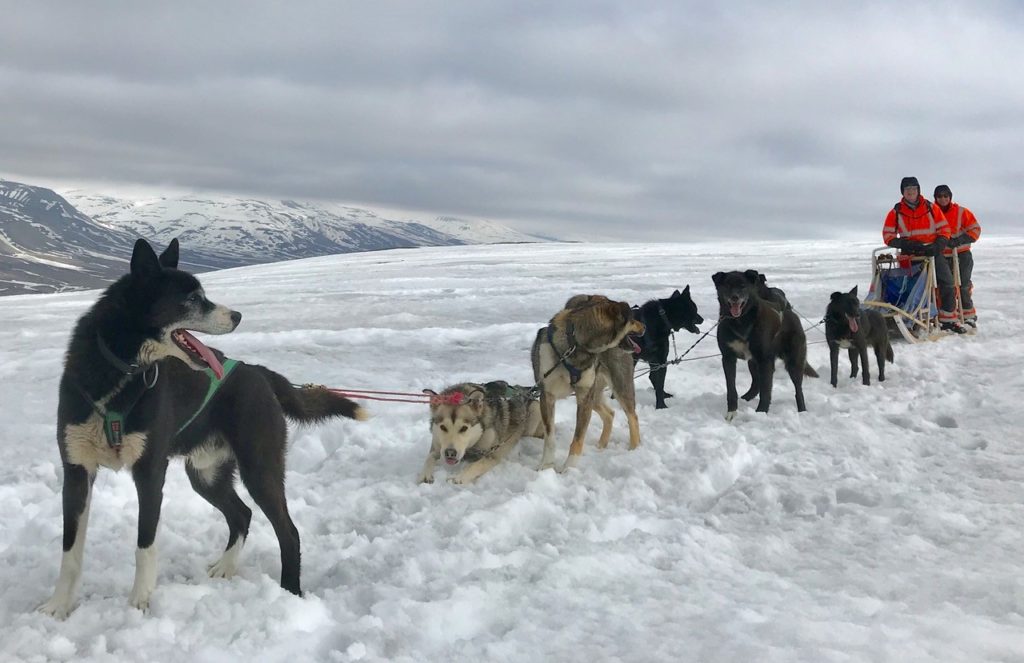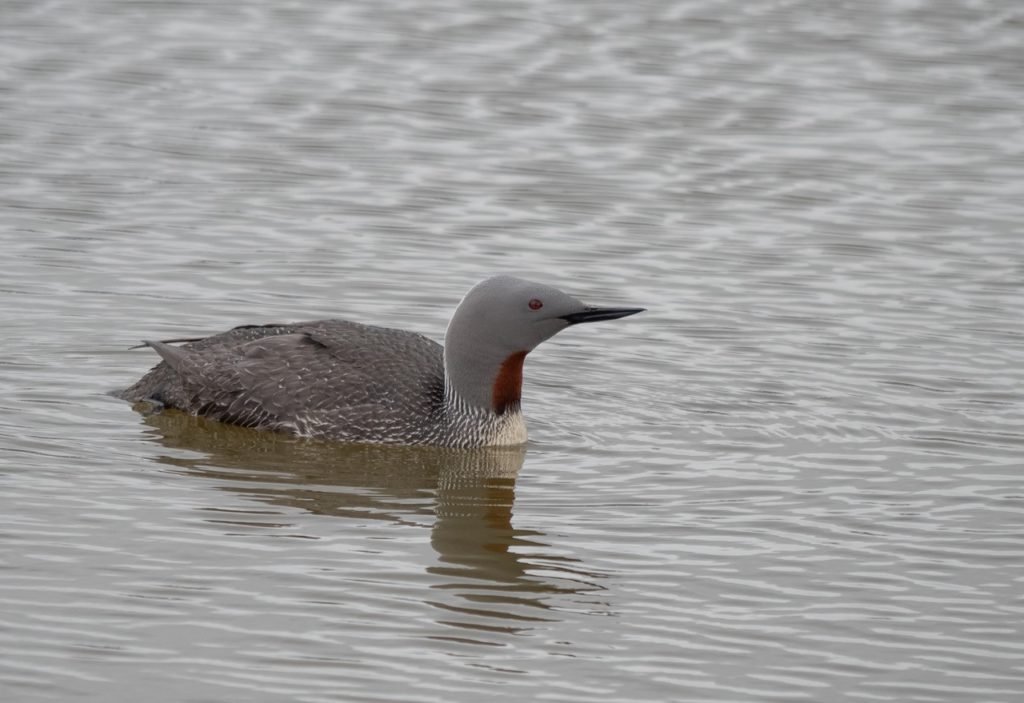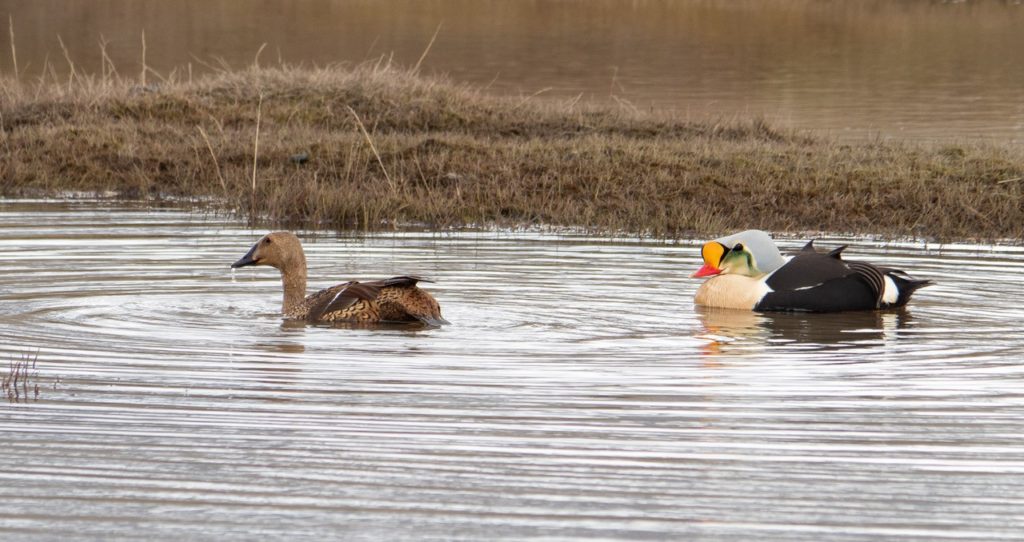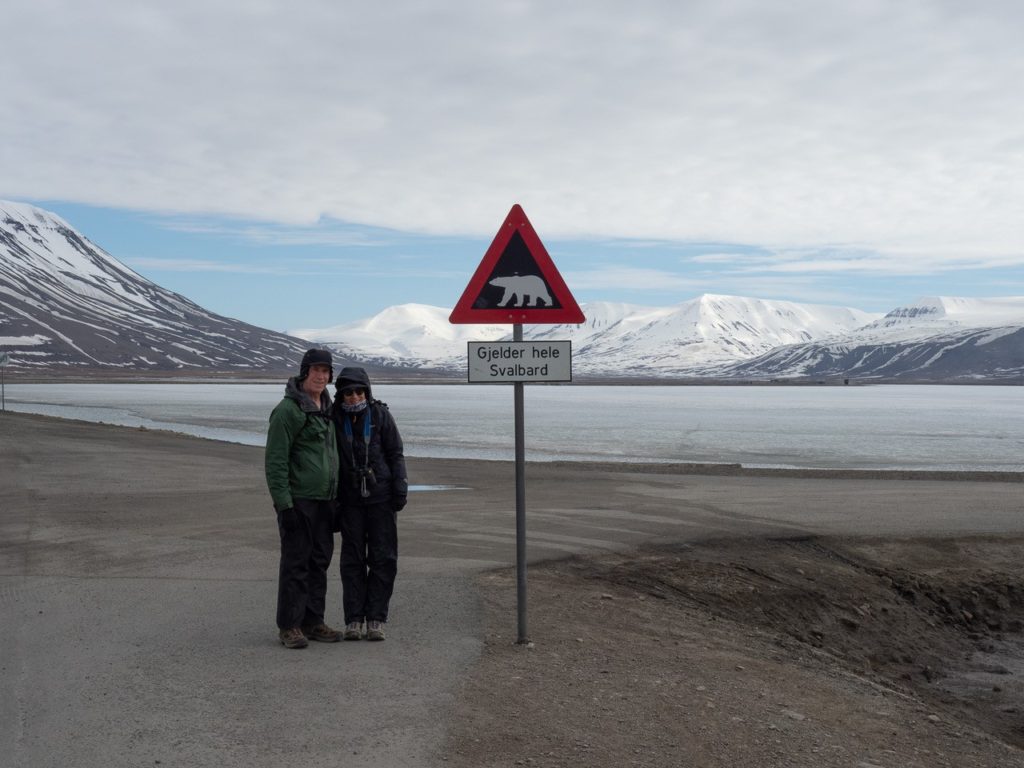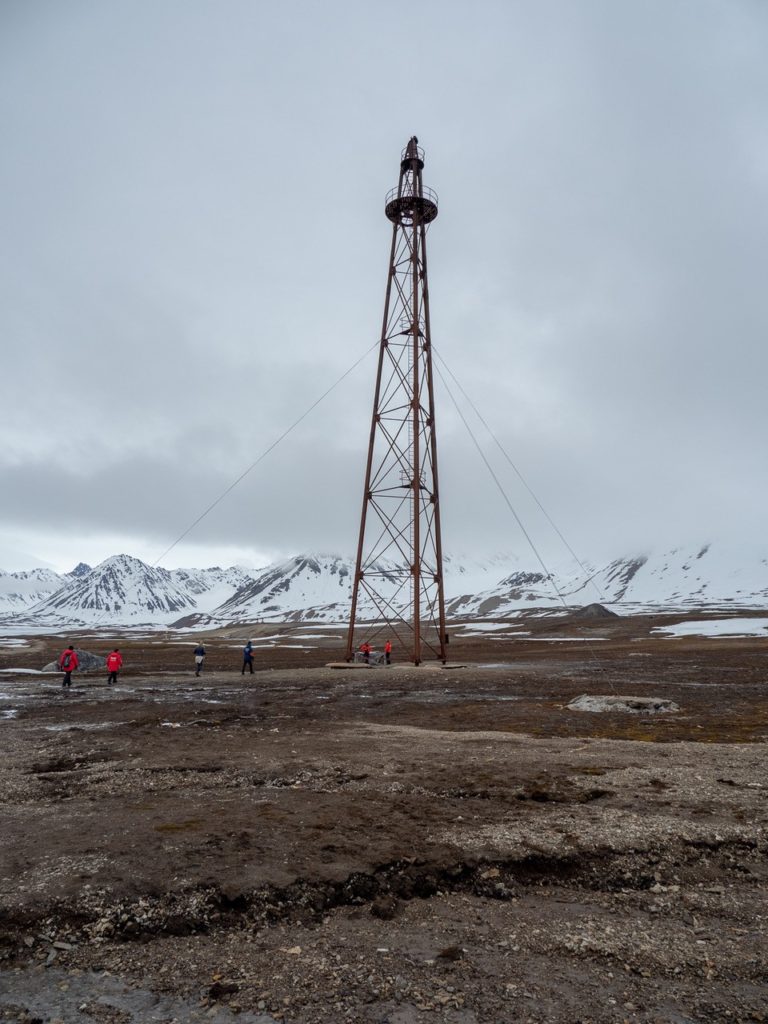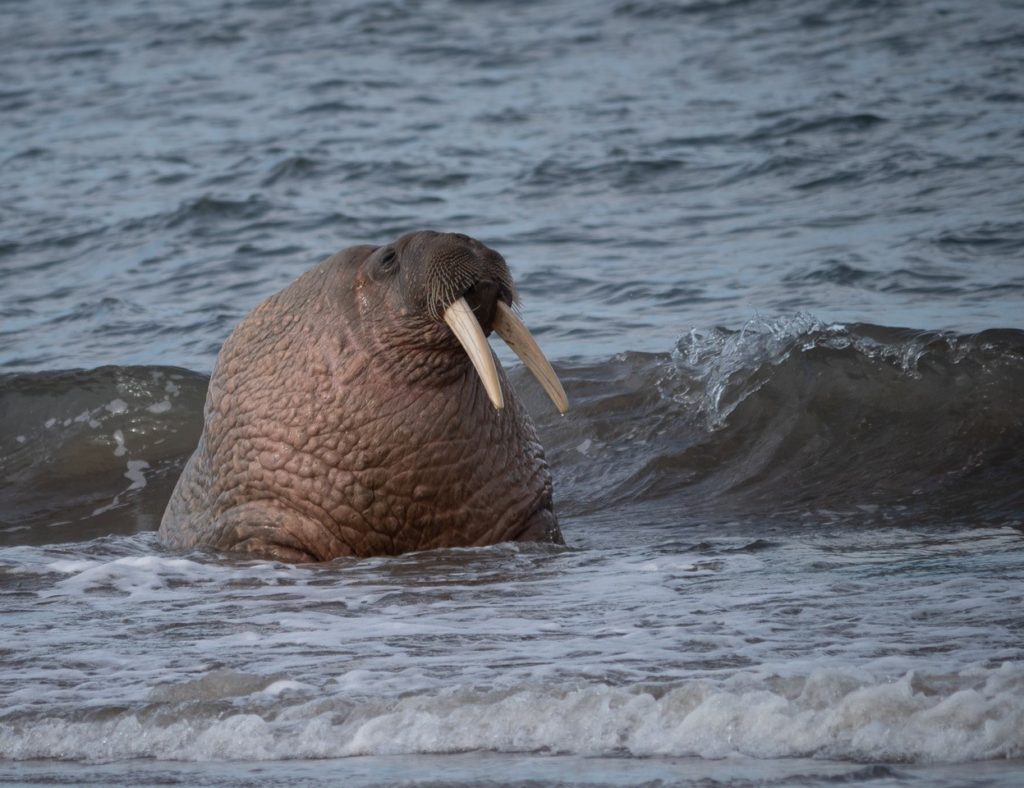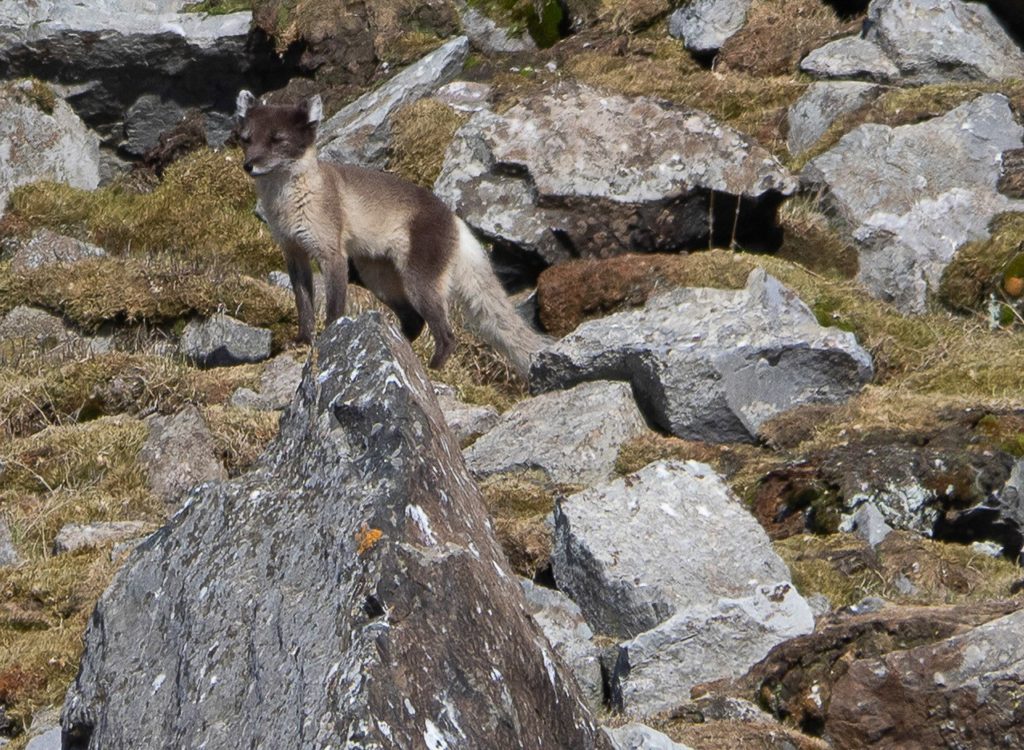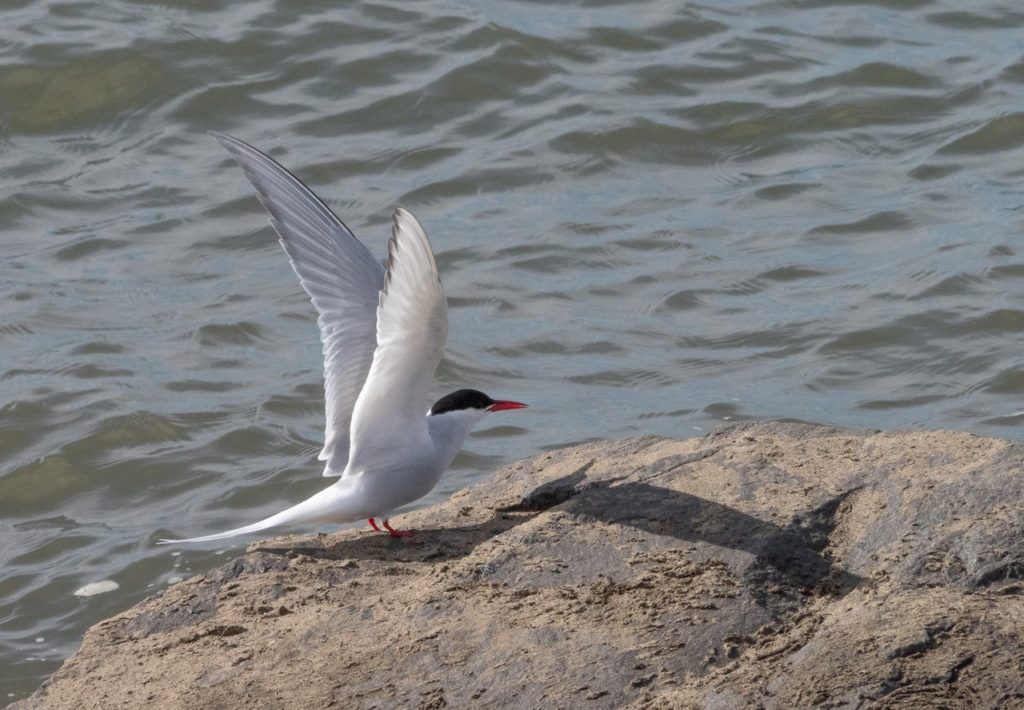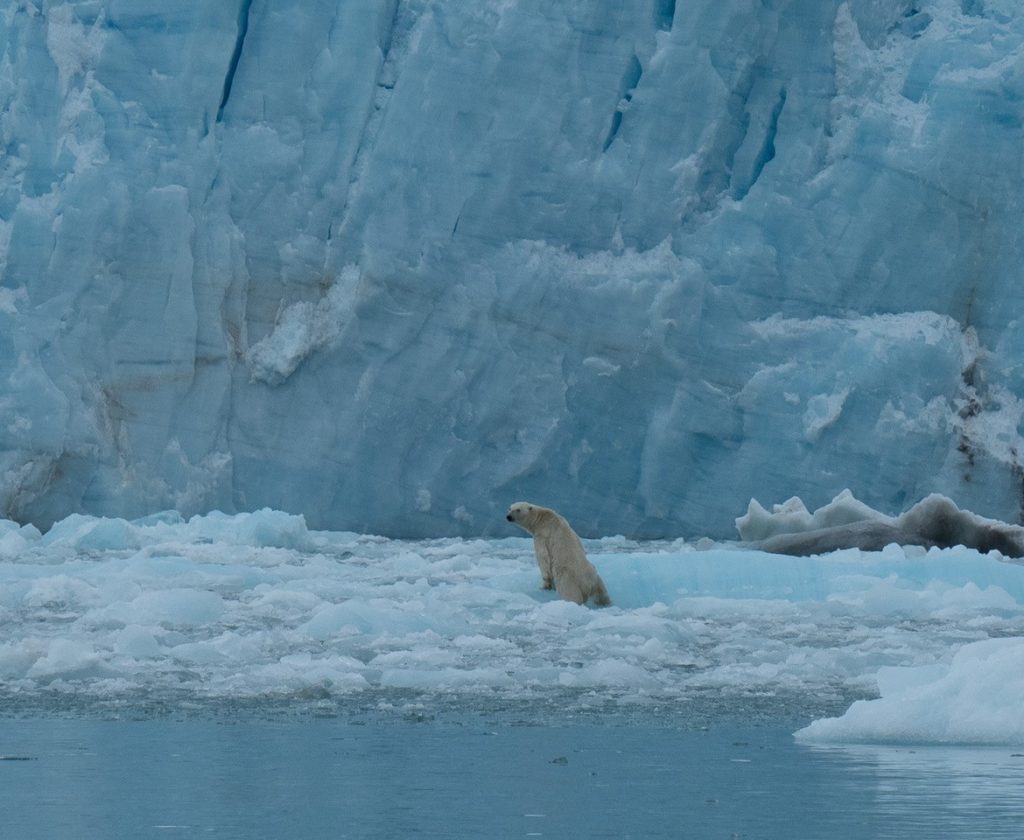David Blass
Taking a warm weather vacation in the winter is pretty common for my wife, Karen, and I. This summer, we did the reverse, and left sweltering Washington for a trip above the Arctic Circle. We saw places that were unique (in our experience), stark, beautiful, remote, spectacular, potentially dangerous and always fascinating.
We flew from Oslo 3 hours north to Longyearbyen, Norway, the largest settlement on the island of Spitsbergen, part of the Svalbard archipelago, which is halfway between the Arctic Circle and the North Pole. Even before we landed, our culture shock began (photo 1). Because of its Arctic location, Longyearbyen appears quite stark when you first arrive, with no vegetation of any kind and all pipes on the surface rather than buried. All building materials, virtually all food and everything used by the population (ca. 2000 people) are imported from the mainland. Though it began as (and still is) a mining town, Longyearbyen now has a university, attracting scientists from around the world for polar studies. There are also many outdoor activities that take advantage of Longyearbyen’s location and climate, among them dogsledding and birding. Though I could write a separate article just about the dogsledding (photo 2), I’ll limit my comments here to WOW! GREAT FUN! And the birding—how can such amazing creatures exist at all, let alone in such a hostile environment (photos 3 and 4)? In Longyearbyen, you have the impression of being in a frontier town, with many familiar comforts, but an ever-present possibility of encountering a polar bear (photo 5). It was common to see residents going about their daily lives (like a mother pushing a baby carriage, or someone riding a bicycle) while carrying a high powered rifle, prepared for the encounter.
After five days in Longyearbyen, we boarded the MV Sea Spirit for an 8-day cruise around Svalbard. Our accommodations were excellent, and the ship’s crew and expedition team were first rate. We did landings once or twice daily after the areas were found by the expedition team to be free of polar bears. We took Zodiacs, inflatable rubber rafts, to mostly uninhabited islands, each one for a particular attraction of historic interest or because of the wildlife. Our single stop on an inhabited island was Ny Ålesund, a research community and the northernmost civilian settlement in the world (78°N). It was from here that Roald Amundsen left in an airship to cross the North Pole (photo 6) and become the first person to make it to the pole. Among the wildlife sightings were walrus (photo 7)—far too many to count—arctic fox (photo 8), arctic terns (photo 9) and polar bears (photo 10). In the evenings we attended excellent lectures by members of the expedition staff, many of whom were academics in fields such as geology, marine biology, and anthropology. The highlight of the lectures was the one given by Felicity Aston, who is the first person to ski solo across Antarctica in 2011, and who lead an all-female expedition to the North Pole in 2018.
We found it as strange to leave the arctic and return to warmer climates as we did to go in the other direction. But more than any trip we’ve ever taken, we felt changed by this experience—in awe of the land and the heroic explorers it inspired.
The cruise was offered by Poseidon Expeditions, who specialize in polar travel. We booked through Wilderness Travel, but it’s the same trip.
https://poseidonexpeditions.com
https://www.wildernesstravel.com
I’d be happy to talk about any aspect of the trip if you are interested.
